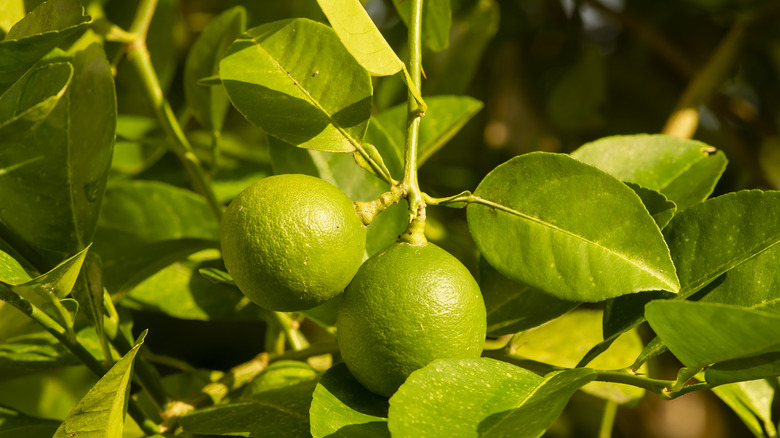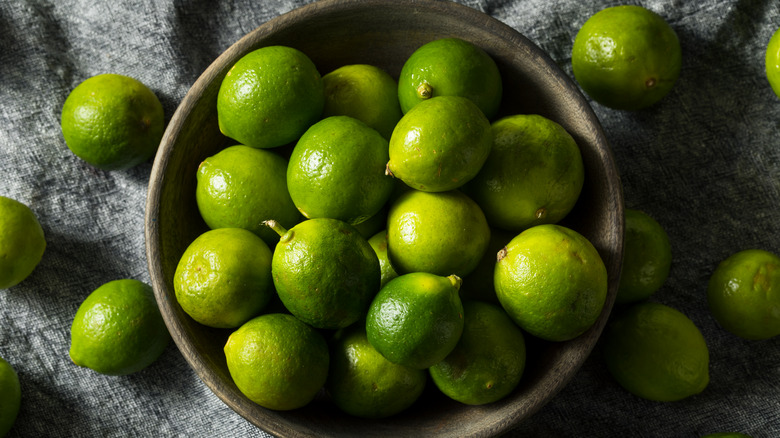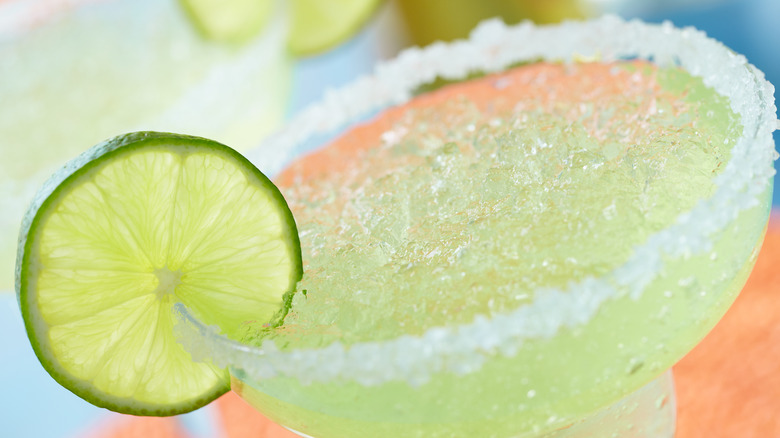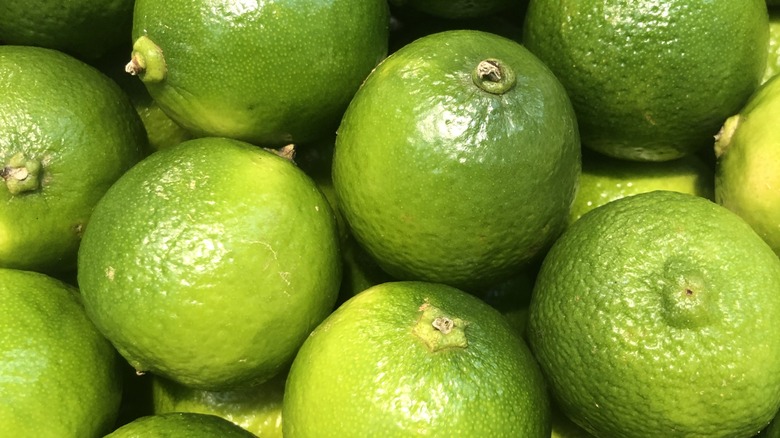The Difference Between A Key Lime & A Regular Lime
Limes offer a sour and bitter punch to a dish, making them a great addition to create more depth of flavor. Like other forms of citrus, limes come in a multitude of varieties. Each one has its own flavor, color, and regional significance, such as key limes. Also known as Mexican or West Indian lime, the key lime is a popular option, and knowing when to use it over normal grocery store limes will help elevate your next lime-centric creation.
The key lime is known for its tartness and pungent aromatics that impart an impactful zing. Regular grocery store limes are more mellow in smell and taste and are favored for everyday dishes. Key limes are most famously used in desserts like key lime pie and are generally considered to be a better choice for sweet treats. While each lime has its moment to shine, it is helpful to know how to bring them to their full potential in your recipes.
Differences in taste, smell, texture, and appearance
One of the easiest ways to distinguish a key lime from a regular one is by its appearance. Key limes have a more yellowish skin, compared to the bright green of standard limes. There are still variations, and the yellow color can be combined with green hues. Key limes are also smaller and rounder and tend to weigh around 1 ounce, compared to standard varieties that are around 3 ounces.
When you cut into a key lime you'll instantly notice the skin is thinner and comparable to a clementine. Regular limes tend to have few or no seeds due to selective breeding, whereas key limes typically have a higher seed content. Upon slicing the two limes you'll notice a distinct difference in the smell too. Key limes are much more aromatic than regular limes, as well as less acidic. Their juice is also much tarter, making the flavor more noticeable in lime-flavored delicacies. Texture-wise, both varieties have the same pulpy consistency common to citrus fruits.
Are key limes more difficult to find?
Key limes can be difficult to find at your everyday grocery store because they grow in limited regions. They were once a large crop export from the Florida Keys, which is how they got their name. In 1926, a hurricane destroyed most of the citrus groves where they were growing at the time, so regular limes were replanted since they were easier to cultivate. Today, key limes are mostly grown in Mexico and South America, as well as in Florida, Texas, and California.
Key limes are more difficult to transport due to their finicky nature after being picked. They don't continue to ripen after harvest and can quickly spoil if they are not used in time. Regular limes are considerably more shelf stable and easier to grow. Due to their difficult shipping and production process, key limes are more expensive and can cost up to three times the price of standard limes.
Uses and nutritional benefits of key limes
This tangy citrus fruit is famously used in desserts like key lime pie and key lime bars. Because of the aromatic, tart flavor, the lime essence of these desserts is highlighted. The sour notes contrast and complement the sugary elements of these desserts, allowing for your senses to be fully engaged with each bite. A regular lime will shine in drinks and as a finishing touch of acidity to season a dish. The more subtle flavor of regular lime works well to balance out other ingredients instead of as the star ingredient.
Both fruits have many of the same health benefits when consumed. They are high in vitamin C and assist with iron absorption in the body. Like most citrus, both varieties are useful for boosting immune function in the body (via WebMD). Key limes also have the unique health benefit of having anticancer properties. A study in 2016 from the Pharmacognosy Review showed that the fruit could potentially interfere with tumor growth and limit cancer cells from spreading.
Proper storage of limes and key limes
The best way to store limes (and this goes for all types) is to keep them whole. Limes rely on their moisture content to preserve their flavor, shape, and pungency, which is maintained until the fruit is cut. Key limes don't stay ripe for long so it's important to use them up before they start to go bad. As for regular limes, they are much more resistant and can be kept fresh for longer. Storing limes in the fridge helps prevent air exposure and preserves freshness for longer.
For regular limes, you also have the option to submerge them in a container of water to help keep them fresh for multiple months. If you don't have a suitable container you can put your limes in a ziploc bag for optimal freshness. Due to the short lifespan of key limes, it's recommended to buy ripe ones right before you plan to use them to get the best flavor and texture from the fruit.
Can you substitute a regular lime for a key lime?
There are many reasons you may consider using regular limes instead of key limes in your recipe. For one, they are much more readily available at local grocery stores. They also are a cheaper option than key limes, and considering you get more juice from regular ones, it may be worth it to some people based on cost alone. You need about three times the amount of key limes to equal one lime. For some purposes, it is just less work to use regular limes.
The main aspect you change by switching to normal limes is the characteristic aroma and tartness of key limes. Your dishes may come out tasting less lime-flavored if you make the swap, and your sweet desserts might lack an acidic element to cut through the sugar. At the end of the day, substituting regular limes for key limes won't hugely impact the quality of your dish and provides very similar results.





